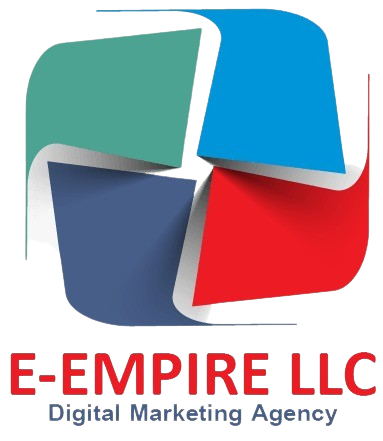If you’re running a business and advertising online, you’re likely familiar with hearing the terms ROAS and ROI quite often.
ROAS and ROI share a common trait: they both measure performance.
However, the similarity ends here as both these metrics serve different purposes.
We’ll explore what ROAS and ROI quantify and how they guide decisions that make a business financially viable while enabling growth.
Let’s unpack the world of ROAS and ROI!
Table of Contents
ToggleWhat is ROAS: Measuring Revenue Generated from Advertising Spend
ROAS, or return on ad spend, tracks how much revenue your marketing efforts generate.
In simpler terms, it tells you how much money you’re making back for every dollar you invest in advertising.
ROAS, expressed as a ratio, is calculated by dividing the total revenue generated through your advertising campaign by the cost incurred on running that campaign.

Here’s an example of ROAS:
If you run an online storefront selling shirts and spend $50 on social media advertising campaigns.
From this campaign, you generate $200 in revenue from people who clicked on your ad and purchased shirts.
In this scenario:
- Revenue from Advertising: $200
- Advertising Cost: $50
Calculating ROAS:
ROAS = $200 / $50
ROAS = 4
So, in this case, for every $1 you spent on advertising, you generated $4 in revenue.
Looking good! This ROAS shows your ads are pulling their weight, bringing in more money than they cost.
Let’s paint another scenario:
Suppose you’re also running search ads for your shirts, and the campaign boasts a ROAS of 5.
This significantly higher ROAS, compared to social media marketing, suggests your search ads campaign generates higher revenue.
The bottom line?
ROAS equips you with the data to make smarter decisions about your advertising budget.
You may divert more resources towards search advertising, knowing it’s bringing in the most revenue.
Here’s the key takeaway about ROAS: It’s a powerful tool that reveals the revenue generated through advertising.
However, it doesn’t tell you whether you’re making a profit, which can make or break a business.
That’s where ROI comes in to save the day.
Breaking Down ROI: What Does Your Investment Really Return?
Understanding ROI is crucial for ensuring your business is sustainable, not just generating revenue through advertising.
This broader perspective tells the real story: Are you earning a profit after everything is accounted for?
ROI, or Return on Investment, takes a more holistic view, factoring in all your business expenses, including advertising costs.

Let’s break down the ROI equation piece by piece
Net Profit from Investment: This represents the outcome of your business initiative. It can be either a positive value (gain) or a negative value (loss).
Gain: If your revenue generated from the investment is higher than your investment cost, you have a positive net profit.
Loss: If your investment cost exceeds the revenue generated, you have a negative net profit, indicating a loss.
Cost of Investment: This includes all the expenses associated with the initiative but is not limited to:
- Production costs (materials, labor, manufacturing)
- Distribution costs (warehousing, shipping, logistics)
- Staff remuneration (salaries, wages, benefits)
- Advertising and marketing expenses
Expressing ROI as a Percentage:
You express ROI as a percentage by multiplying the result by 100%, which allows for easier comparison across different initiatives or industry benchmarks.
Example:
Imagine you invest $1,000 for a new product launch. Here are two scenarios to illustrate ROI calculation:
- Scenario 1: Gain
- Revenue generated from sales: $2,000
- Cost of Investment:
- Production costs: $500
- Distribution costs: $100
- Staff remuneration: $200
- Advertising costs: $200 (marketing campaign)
- Total Cost of Investment: $500 + $100 + $200 + $200 = $1,000
- Net Profit: $2,000 (revenue) – $1,000 (cost) = $1,000 (gain)
ROI Calculation:
ROI = ($1,000) / $1,000 x 100% = 1 x 100% = 100%
In this scenario, your ROI is 100%, meaning your product sales completely covered all costs, including advertising, and delivered a profit equal to your initial investment.
- Scenario 2: Loss
- Revenue generated from sales: $500
- Cost of Investment (using the exact breakdown as scenario 1): $1,000
- Net Profit: $500 (revenue) – $1,000 (cost) = -$500 (loss)
ROI Calculation:
ROI = (-$500) / $1,000 x 100% = -0.5 x 100% = -50%
Here, the ROI is -50%, indicating that product sales resulted in a loss equivalent to half of your initial investment after factoring in all costs, including advertising.
How ROI Helps You Choose Your Best Investment
The true power of ROI lies in its ability to compare the efficiency of your investments across different scenarios.
For instance, let’s say you’re evaluating the return on investment for two options: purchasing a rental property and investing in a stock portfolio.
ROI calculations for each option would reveal which generated a higher return over a specific timeframe.
Suppose your real estate investment yields a 10% ROI while your stock portfolio delivers a 15% ROI over the same period.
In that case, this tells you that your stocks delivered a better return on investment in that particular scenario.
ROI equips you with valuable insights into the financial health of your business initiatives.
A positive ROI indicates a successful venture, while a negative ROI highlights areas for improvement.
Conclusion
ROAS and ROI, though distinct metrics, are powerful tools when used in tandem.
ROAS reveals the efficiency of your advertising efforts by showing how much revenue is generated for each advertising dollar spent—crucial for campaign optimization.
Conversely, ROI offers a broader perspective by accounting for all business expenses, providing a clear picture of overall investment efficiency and profitability.
Combining the detailed insights from ROAS with the comprehensive analysis of ROI allows you to make informed decisions, balance short-term advertising efficiency with long-term profitability, and ultimately maximize your business’s growth and success.

